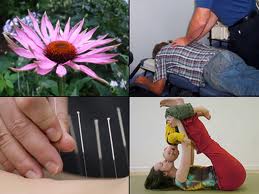Mindful Minutes: Cultivating Awareness in Children is a new 3-hour online continuing education (CE) course that provides a deeper understanding of what mindfulness is and how it can help children to develop social and emotional regulation skills, manage stress, and skillfully approach the challenges they face in life.
We begin by exploring how the attention of today’s youth is susceptible to increased demands and overstimulation from screen related technology and the idea that children’s attention is a commodity, which can be cultivated and harvested with detrimental effects on their well-being. This leads into a brief discussion on the how, and possibly why, children’s mental health has deteriorated in recent years.
Evidence-based research on the positive effects of mindfulness on children’s social and emotional wellbeing is presented. Five mindfulness skill areas are introduced, followed by ten creative Mindful Minutes skill building techniques. These techniques are shared through description, application, research, and examples of real-life stories, illustrating how to incorporate mindfulness into your daily routine.
Finally, we outline how mindfulness can be fostered through “Try It” Mindful Minutes activities that will support children as they learn how to focus, cultivate self-awareness, regulate emotions, and respond calmly to situations with kindness and compassion. Course #31-45 | 2022 | 53 pages | 20 posttest questions
- CE Credit: 3 Hours
- Target Audience: Psychologists | Counselors | Social Workers | Occupational Therapists (OTs) | Marriage & Family Therapists (MFTs) | School Psychologists | Teachers
- Learning Level: Intermediate
- Course Type: Online
Mindful Minutes: Cultivating Awareness in Children is an online course that provides instant access to the course materials (PDF download) and CE test. The course is text-based (reading) and the CE test is open-book (you can print the test to mark your answers on it while reading the course document).
Successful completion of this course involves passing an online test (80% required, 3 chances to take) and we ask that you also complete a brief course evaluation. Click here to learn more.
Professional Development Resources is approved by the American Psychological Association (APA) to sponsor continuing education for psychologists. Professional Development Resources maintains responsibility for this program and its content. Professional Development Resources is also approved by the National Board of Certified Counselors (NBCC ACEP #5590); the Association of Social Work Boards (ASWB Provider #1046, ACE Program); the Continuing Education Board of the American Speech-Language-Hearing Association (ASHA Provider #AAUM); the American Occupational Therapy Association (AOTA Provider #3159); the Commission on Dietetic Registration (CDR Provider #PR001); the Alabama State Board of Occupational Therapy; the Arizona Board of Occupational Therapy Examiners; the Florida Boards of Social Work, Mental Health Counseling and Marriage and Family Therapy, Psychology and Office of School Psychology, Speech-Language Pathology and Audiology, Dietetics and Nutrition, and Occupational Therapy Practice; the Georgia State Board of Occupational Therapy; the Louisiana State Board of Medical Examiners – Occupational Therapy; the Mississippi MSDoH Bureau of Professional Licensure – Occupational Therapy; the New York State Education Department’s State Board for Psychology as an approved provider of continuing education for licensed psychologists (#PSY-0145), State Board for Mental Health Practitioners as an approved provider of continuing education for licensed mental health counselors (#MHC-0135) and marriage and family therapists (#MFT-0100), and the State Board for Social Workers an approved provider of continuing education for licensed social workers (#SW-0664); the Ohio Counselor, Social Worker and MFT Board (#RCST100501) and Speech and Hearing Professionals Board; the South Carolina Board of Examiners for Licensure of Professional Counselors and Therapists (#193), Examiners in Psychology, Social Worker Examiners, Occupational Therapy, and Examiners in Speech-Language Pathology and Audiology; the Tennessee Board of Occupational Therapy; the Texas Board of Examiners of Marriage and Family Therapists (#114) and State Board of Social Worker Examiners (#5678); the West Virginia Board of Social Work; the Wyoming Board of Psychology; and is CE Broker compliant (#50-1635 – all courses are reported within a few days of completion).
Enjoy 20% off all online continuing education (CE/CEU) courses @pdresources.org! Click here for details.









